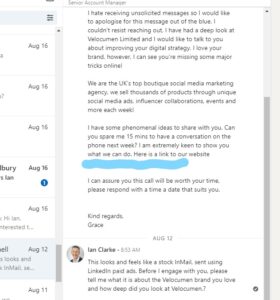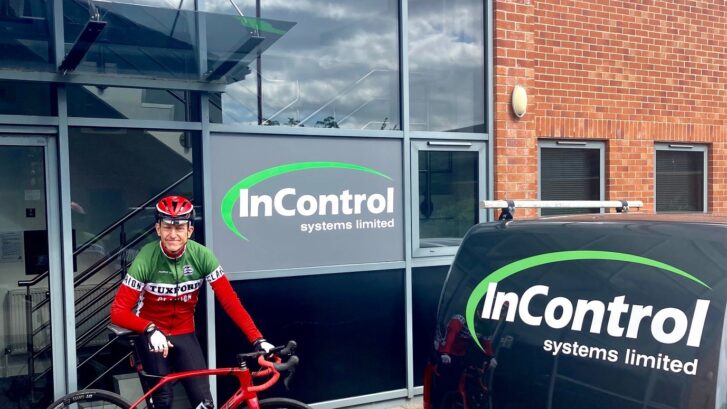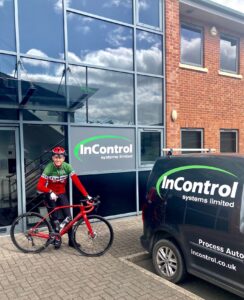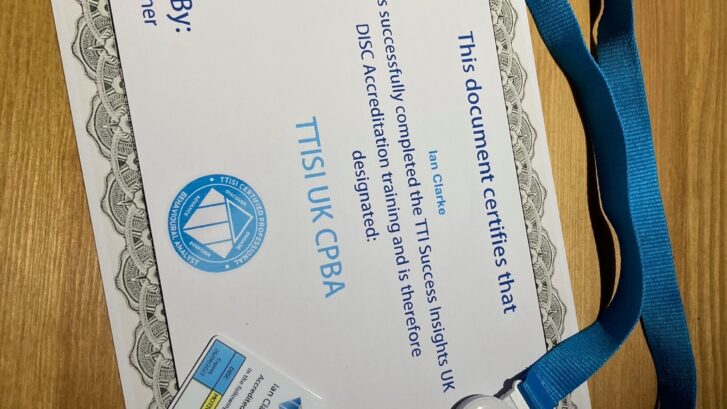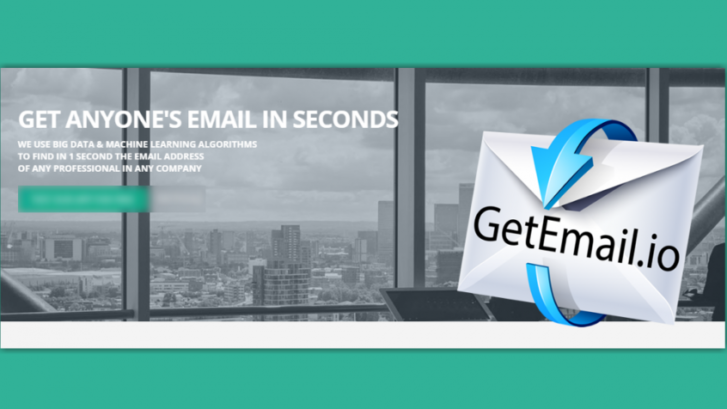How to turn people ‘right off’ using LinkedIn for prospecting
As I’ve grown the business – Velocumen, my online presence has slowly grown too.
To explain, I use LinkedIn extensively. to network, to research businesses and to reach out to new prospects, where I hope to be able to introduce not my business, but my clients’ business and their services. This means I have to be supremely careful as it is not only my reputation at stake, but also my clients’. I keep having to remind myself that LinkedIn is a bit more than Facebook for business people… shouldn’t we all?
When trying to make contact with new people (on behalf of my clients), I am always aware that their time is valuable, and they might not see what I’d like to speak to them about, as one of their priorities on any given day. But I am increasingly aware and shocked by some of the immature and elaborate ways that people use when trying to get in touch with me (one such example of that is shown in this picture), so here are a few ‘dos’ and ‘don’ts’, that I have found useful from both sides of the LinkedIn networking challenge.
- Do: be straight, polite and to the point
- But ‘do’ your research, are you sure you know this person and their business profile? and do you really understand it?
- If you use automated, or outsource your introduction methods ‘do’ have a clear follow-up method. I’ve had people chase me 2 – 3 times, even though I ‘did’ actually reply to them
- Do: be courteous, if someone has the decency to come back to you with a question or comment about what you’ve said, go back to them, rather than turning your back on them
- Don’t: assume you really know their business, when actually you ‘don’t’
- Don’t: suggest you know their challenges and have insights from similar companies, it’s best to assume you ‘don’t’
- Do: look at their profile carefully, research their company, look at their posts, it really helps to tailor your message to them
- Don’t: use stock intro’ messages, unless you are prepared to edit them very carefully – read twice, send once!
- Don’t: just collect contacts
- Always: say ‘why’ you want to connect with them, just because ‘we have shared contacts’, isn’t a good enough reason
Now, back to Grace, she never did come back to me to tell me why she ‘loved’ our brand, or how deep she looked into our business. Even though I noticed she was looking at my LinkedIn profile shortly after my reply (a bit late for that). But, I do really understand how hard it is to make new contacts on LinkedIn, and that’s why I’ll always go back to people if they reach out to me, even if it is to challenge them, or give a little free advice.
